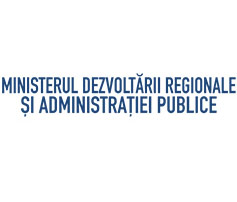 Geographical data, Climate, History
Geographical data, Climate, History
Climate
The climate of Târgovişte city is determined by the geographical location and relief. The parallel of 45° which passes by the Northern part of the municipality territory (Şotânga-Doiceşti-Aninoasa) and which represents not only half of the distance between the pole and equator but also between the peaks of Southern Carpathians and the Romanian Plain explains the continental climate of the city.
The annual thermal amplitude specific to this latitude is reduced by the city location in the intrahilly area: Bucşanilor Hillock stops the frosts and strong winds during the winter and the hills and Ialomiţei Valley tempers the summer hotness. It can be said that Târgovişte benefits from a pleasant climate, one of the most favourable from the country. The climate of Târgovişte is characterized by the annual average temperature of 9,9°C and thermal amplitude of 22°C (the average temperature of January being -1,2°C and of July +20,8°C). The absolute maximum temperature registered in Târgovişte was +40,4°C in 1946, followed by 39,1°C in 2000. The absolute minimum was registered on January 13th 2004 and was -25,8 °C. The annual value of the radiation balance (annual intensity of solar heat) is 50 kcal/cm² - heat which helps the optimum development of the vegetal blanket.
The eolian regime is characterized by the predominance of North-Western, North-Eastern and Western winds both in the cold periods of the year and in the warm ones. The annual average speeds of the winds, depending on direction vary between 2,1 and 3,2 m/s (from NE direction, namely N) and the monthly average speeds between 0,9 m/s (from SE in January) and 4,2 m/s (from NE in March). The frequency of calm periods is higher in the cold period, over 40% in October-February (December and January over 45%). The biggest number of clear days is registered in July-October, the average for this period being 7,9 clear days/month (25,5%). The annual average shows 63,4 clear days/year.
The precipitation reaches values between 450-780 mm annually in the municipality area, although extreme values of 368 mm (1992) or 1015 mm (1979) have also been registered. The average of annual amount of 627 mm shows that there are favourable conditions for the development of plants in the area, especially that the monthly maximum values are registered in June (monthly average of 101 mm) and July (monthly average of 84 mm).










